Reviving Lost Pottery Techniques: A Noble Quest
This article explores the significance of preserving ancient pottery techniques, the challenges faced, and the innovative approaches being adopted to revive these traditional crafts for future generations.
Traditional pottery is more than just clay molded into beautiful shapes; it is a reflection of cultural heritage and identity. Each piece tells a story, connecting us to our ancestors and the communities they belonged to. Imagine holding a pot that has been crafted using techniques passed down through generations—it's like holding a piece of history. The intricate designs and methods used in traditional pottery not only showcase the craftsmanship involved but also embody the values, beliefs, and experiences of the people who created them. By understanding the significance of these artifacts, we foster a deeper connection to our past, allowing us to appreciate the artistry and the stories that each piece carries.
However, the journey to revive lost pottery techniques is fraught with challenges. The decline in skilled artisans, coupled with a lack of resources and the fading interest among younger generations, poses significant barriers to preserving this art form. It’s crucial to address these issues to ensure that traditional pottery does not fade into obscurity. The art of pottery is not just about the final product; it’s about the process, the community, and the shared knowledge that comes with it. Without intervention, we risk losing not just the techniques, but the very essence of this craft.
The scarcity of skilled artisans is one of the most pressing challenges in reviving lost pottery techniques. As the older generation of potters retires, there are not enough trained individuals to take their place. This gap creates a significant barrier to passing down the intricate skills and knowledge that define traditional pottery. To combat this, we must establish training programs and workshops that can effectively nurture talent and interest in these age-old techniques. Imagine a world where young potters are mentored by seasoned artisans, learning the nuances of clay manipulation, glazing, and firing methods. Such initiatives can breathe new life into this craft and ensure that it continues to thrive.
Creating training programs is essential for nurturing talent and fostering a passion for traditional pottery techniques. These initiatives can include hands-on workshops, where participants can get their hands dirty and experience the tactile joy of working with clay. Additionally, mentorship opportunities can be established, pairing experienced artisans with novices. This not only facilitates knowledge transfer but also creates a sense of community and shared purpose among potters. By investing in these programs, we can cultivate a new generation of artisans who appreciate the value of tradition while bringing their unique perspectives to the craft.
Mentorship plays a vital role in preserving pottery techniques. Pairing experienced artisans with novices fosters knowledge transfer and inspires young potters to embrace traditional methods. It's like planting seeds in a garden; with the right care and guidance, these seeds can grow into thriving plants. By encouraging mentorship, we create a supportive environment where young potters can learn, experiment, and innovate while respecting the roots of their craft. This intergenerational exchange not only strengthens the community but also ensures that the rich legacy of pottery continues to flourish.
Another challenge we face is the fading interest among younger generations. In a world dominated by technology and fast-paced lifestyles, traditional crafts can seem outdated or irrelevant. To revive pottery techniques, we must capture the interest of young people by engaging them through modern interpretations and innovative designs. Imagine a vibrant pottery studio where old meets new, where traditional methods are infused with contemporary aesthetics. By bridging the gap between tradition and modern art, we can create unique pieces that resonate with today’s consumers and spark a renewed passion for pottery.
Fortunately, there are innovative approaches that can breathe new life into traditional pottery techniques. By integrating technology and contemporary design, we can attract a wider audience and ensure the longevity of these crafts. This fusion of old and new not only honors the heritage of pottery but also opens up new possibilities for artistic expression.
Incorporating technology, such as 3D printing and digital design, can enhance traditional pottery practices. These tools offer new possibilities while respecting the essence of age-old techniques. For instance, imagine creating a complex pottery design using a 3D printer, and then finishing it with traditional hand-glazing techniques. This blend of technology and tradition can attract a younger audience who may otherwise overlook the beauty of handcrafted pottery.
Modern interpretations of traditional pottery can appeal to contemporary audiences. Artists who blend old techniques with new aesthetics can create unique pieces that honor heritage while resonating with today’s consumers. Think of it as a remix of a classic song; the original essence remains, but it’s reimagined in a way that speaks to current tastes. This approach not only preserves the craft but also revitalizes it, ensuring that pottery continues to evolve and thrive in the modern world.
- What are traditional pottery techniques?
Traditional pottery techniques refer to the methods and processes used by artisans to create pottery, often passed down through generations. - Why is it important to revive lost pottery techniques?
Reviving these techniques helps preserve cultural heritage, promotes craftsmanship, and fosters a deeper connection to history. - How can technology help in pottery?
Technology can enhance traditional practices by introducing new tools and methods, such as 3D printing and digital design, while still respecting age-old techniques. - What role does mentorship play in pottery?
Mentorship facilitates knowledge transfer between experienced artisans and novices, helping to preserve traditional techniques and inspire new generations of potters.
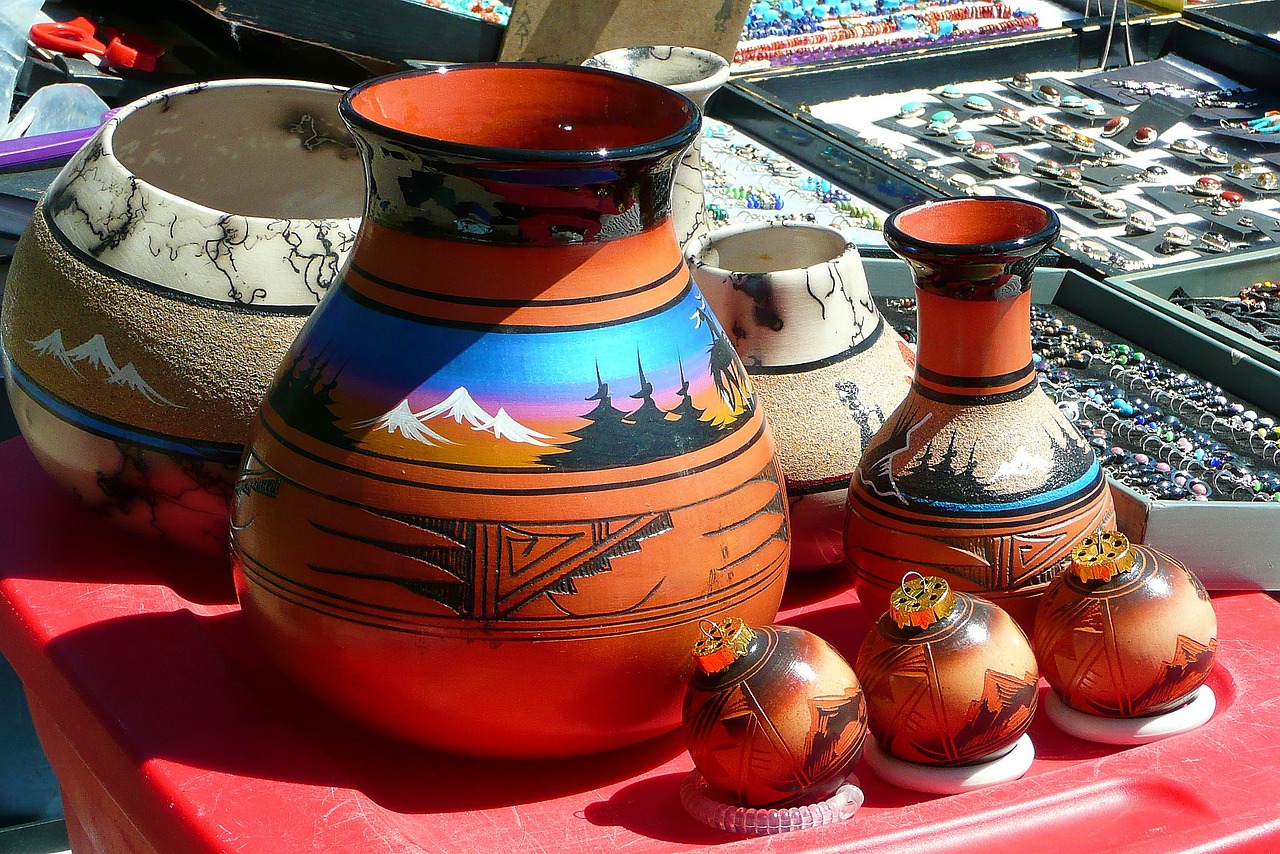
The Importance of Traditional Pottery
This article explores the significance of preserving ancient pottery techniques, the challenges faced, and the innovative approaches being adopted to revive these traditional crafts for future generations.
Traditional pottery is more than just clay molded into beautiful shapes; it is a reflection of cultural heritage and identity. Each piece tells a story, often rooted in the history of the community that created it. Imagine holding a vase that has been crafted using techniques passed down through generations—it's like holding a piece of history in your hands. The intricate designs and unique styles of traditional pottery not only showcase the craftsmanship of the artisans but also connect us to our ancestors and their way of life.
Understanding the significance of traditional pottery helps us appreciate the skills and artistry involved in its creation. These artisans often spend years perfecting their craft, learning the nuances of their trade through practice and dedication. The rich variety of pottery styles across different cultures—be it the delicate porcelain of China, the rustic earthenware of Mexico, or the vibrant ceramics of Morocco—highlights the diversity of human expression and creativity.
Furthermore, traditional pottery plays a crucial role in fostering a sense of community. It brings people together, whether through workshops, exhibitions, or local markets. When individuals engage with pottery, they are not just creating art; they are building connections with others who share similar interests. This communal aspect is vital for the survival of these techniques, as it encourages collaboration and knowledge sharing among artisans and enthusiasts alike.
In addition to its cultural significance, traditional pottery also promotes sustainability. Many of the materials used in pottery-making are sourced locally, which reduces the environmental impact associated with production. The techniques often emphasize minimal waste and the use of natural resources, aligning with modern values of sustainability and eco-friendliness. As we face pressing environmental challenges, the lessons learned from traditional pottery can inspire more sustainable practices in contemporary art and craft.
To sum it up, the importance of traditional pottery lies in its ability to connect us to our past, foster community, and promote sustainable practices. As we delve deeper into the challenges of reviving these techniques, it becomes clear that preserving this art form is not just about maintaining a craft; it’s about honoring our shared heritage and ensuring that future generations can experience the beauty and significance of traditional pottery.
Reviving lost pottery techniques faces numerous challenges, including the scarcity of skilled artisans, lack of resources, and the fading interest among younger generations. Addressing these issues is crucial for the preservation of this art form.
The decline in skilled artisans poses a significant barrier to reviving lost pottery techniques. Training programs and workshops are essential to pass down knowledge and skills to a new generation of potters.
Creating training programs can help nurture talent and interest in traditional pottery techniques. These initiatives can include hands-on workshops, mentorship opportunities, and collaborations with experienced artisans.
Mentorship plays a vital role in preserving pottery techniques. Pairing experienced artisans with novices fosters knowledge transfer and inspires young potters to embrace traditional methods.
Capturing the interest of younger generations is crucial for the revival of pottery techniques. Engaging them through modern interpretations and innovative designs can help bridge the gap between tradition and contemporary art.
Innovative approaches, such as integrating technology and contemporary design, can breathe new life into traditional pottery techniques. This fusion can attract a wider audience and ensure the longevity of these crafts.
Incorporating technology, such as 3D printing and digital design, can enhance traditional pottery practices. These tools offer new possibilities while respecting the essence of age-old techniques.
Modern interpretations of traditional pottery can appeal to contemporary audiences. Artists blending old techniques with new aesthetics can create unique pieces that honor heritage while resonating with today’s consumers.
- What is traditional pottery? Traditional pottery refers to ceramic art that is created using age-old techniques that have been passed down through generations.
- Why is it important to preserve traditional pottery techniques? Preserving these techniques helps maintain cultural heritage, fosters community, and promotes sustainability.
- How can I get involved in pottery? You can start by attending local workshops, joining pottery classes, or collaborating with experienced artisans to learn the craft.
- What challenges do artisans face today? Artisans face challenges such as a lack of resources, a decline in skilled practitioners, and diminishing interest from younger generations.
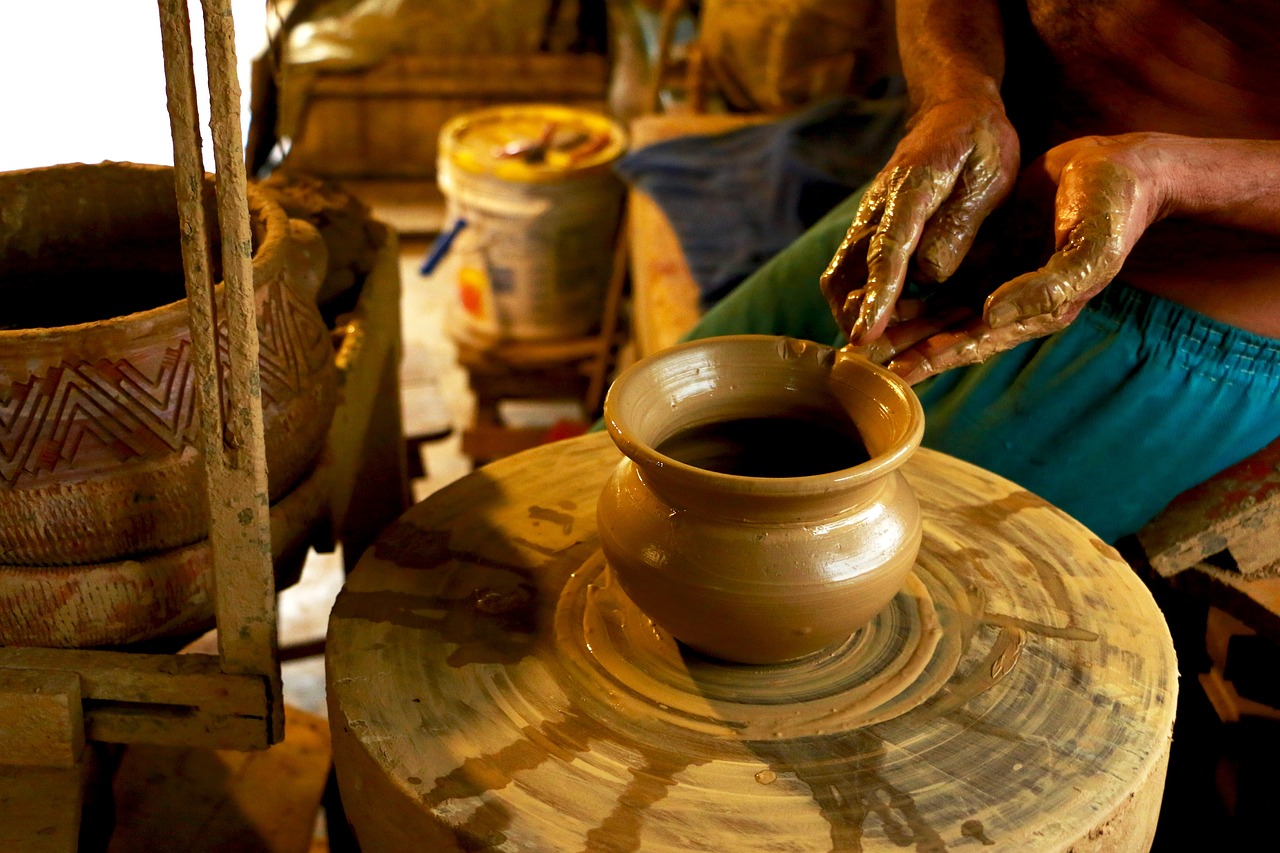
Challenges in Reviving Techniques
Reviving lost pottery techniques is not just about picking up a clay pot and molding it into shape; it’s a journey filled with hurdles that can feel as daunting as scaling a mountain. One of the most pressing challenges is the scarcity of skilled artisans. Over the years, many talented potters have either retired or moved on to other professions, leaving a gaping hole in the artisan community. This decline means fewer individuals possess the intricate knowledge required to create traditional pottery, and without these skills, the art form risks becoming a mere memory.
Moreover, the lack of resources plays a significant role in this revival quest. Many aspiring potters find themselves without access to quality materials or tools that are essential for traditional pottery making. Imagine trying to bake a cake without flour or sugar; the end result just wouldn't be the same! Similarly, without the right materials, the authenticity of the pottery is compromised, and the connection to traditional techniques fades.
Another challenge is the fading interest among younger generations. In a world dominated by technology and rapid changes in trends, traditional crafts often take a backseat. Young people are more drawn to digital art forms or contemporary design, leaving pottery to be seen as outdated or irrelevant. This generational gap creates a disconnect that can be difficult to bridge. However, it also presents an opportunity—by making pottery more appealing through modern interpretations, we can reignite interest among youth.
Addressing these challenges requires a multifaceted approach. For instance, establishing training programs is crucial. These programs can serve as a lifeline for aspiring potters, providing them with the skills and knowledge needed to carry on the tradition. Imagine a workshop filled with eager learners, hands covered in clay, as they learn from seasoned artisans. Such experiences not only teach the craft but also foster a sense of community and shared purpose.
Additionally, encouraging mentorship is vital. Pairing experienced artisans with novices creates a dynamic learning environment that promotes knowledge transfer. This relationship can be likened to a relay race, where the baton of skills and traditions is passed down from one generation to the next, ensuring that the flame of traditional pottery continues to burn brightly.
Ultimately, while the challenges in reviving lost pottery techniques are significant, they are not insurmountable. By focusing on education, resource availability, and engaging the younger generation, we can pave the way for a vibrant future where traditional pottery not only survives but thrives.

Scarcity of Skilled Artisans
The revival of lost pottery techniques faces a significant hurdle: the . In a world where technology and mass production dominate, the number of individuals who possess the intricate skills required for traditional pottery is dwindling. This decline is not merely a statistic; it represents a profound loss of cultural heritage and craftsmanship that has taken centuries to hone. Imagine walking into a studio where each piece of pottery tells a story, a narrative woven through the hands of a skilled artisan. Now, picture that studio becoming increasingly quiet as fewer and fewer artisans are able to pass down their knowledge.
Why is this happening? Several factors contribute to this alarming trend. Firstly, the economic viability of traditional pottery has diminished. Many artisans find it challenging to compete with cheaper, mass-produced alternatives. As a result, younger generations are less inclined to pursue pottery as a viable career. Moreover, the time-intensive nature of traditional pottery techniques often deters potential artisans who seek quicker financial returns in other trades. This creates a vicious cycle where the art form struggles to attract new talent, leading to a further decline in skilled practitioners.
To combat this issue, establishing training programs is essential. These programs can serve as a bridge between the old and the new, allowing aspiring potters to learn from seasoned artisans. Imagine a vibrant workshop filled with eager learners, their hands covered in clay, as they absorb the wisdom of those who came before them. Such initiatives can include:
- Hands-on workshops that allow participants to engage directly with the materials and techniques.
- Mentorship opportunities where experienced artisans guide novices through the creative process.
- Collaborations with educational institutions to incorporate pottery into art curricula.
Moreover, encouraging mentorship is vital in preserving these techniques. When experienced artisans take on apprentices, they not only pass down their skills but also ignite a passion for the craft in their mentees. This personal connection can inspire young potters to embrace traditional methods, ensuring that the knowledge of the past does not fade away. Just as a tree grows stronger with deep roots, so too can the craft of pottery flourish with a solid foundation of mentorship.
Ultimately, addressing the scarcity of skilled artisans is not just about preserving a craft; it is about maintaining a vital link to our cultural identity. By investing in training programs and fostering mentorship, we can create a new generation of potters who are not only skilled but also passionate about their heritage. The revival of these lost techniques will not only enrich our artistic landscape but also strengthen our communities, reminding us of the stories and traditions that shape who we are.
- What are traditional pottery techniques? Traditional pottery techniques refer to the methods and skills used to create pottery that has been passed down through generations, often involving hand-shaping, natural materials, and specific firing processes.
- How can I get involved in pottery? You can get involved by attending local workshops, taking classes at community colleges, or finding online tutorials to learn the basics of pottery.
- Why is preserving pottery important? Preserving pottery is important as it maintains cultural heritage, supports artisan communities, and fosters a deeper understanding of historical craftsmanship.
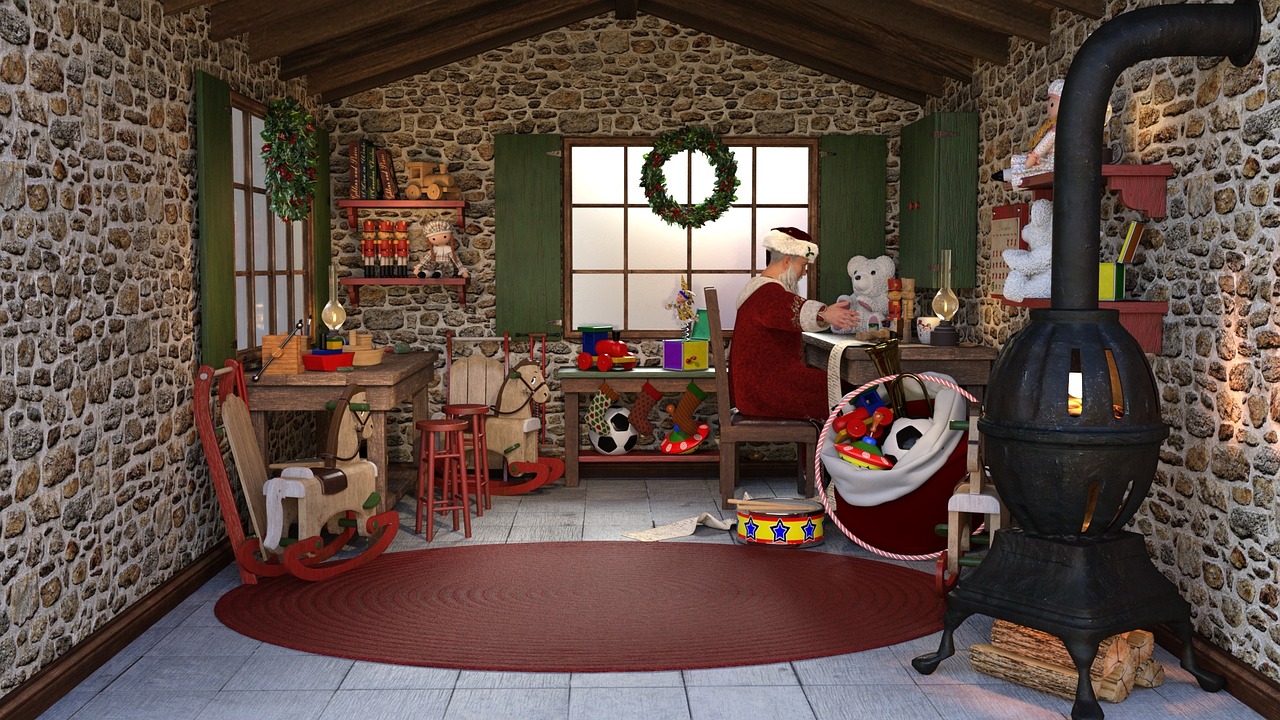
Establishing Training Programs
Establishing training programs is not just about teaching skills; it's about igniting a passion for traditional pottery that can be passed down through generations. Imagine a vibrant workshop filled with the rhythmic sounds of wheels turning and hands shaping clay, where the air is thick with creativity and history. These programs are essential for nurturing talent and fostering a love for the craft among young potters. They provide a structured environment where novices can learn the intricate techniques that have been honed over centuries.
To effectively establish these training programs, it's crucial to incorporate a variety of teaching methods that cater to different learning styles. For instance, hands-on workshops allow participants to get their hands dirty and truly understand the medium they are working with. Additionally, theoretical sessions can provide context about the cultural significance of pottery, enhancing the learning experience. Mentorship opportunities are also vital, as pairing experienced artisans with budding potters can create a dynamic learning environment where knowledge flows freely.
Moreover, partnerships with local schools and community centers can help in reaching a broader audience. By introducing pottery classes as part of art education, we can spark interest in young minds early on. Integrating pottery into school curriculums not only preserves the craft but also enriches students' understanding of their cultural heritage. Imagine a classroom where students explore their creativity, learning to express themselves through clay while gaining respect for the skills of their ancestors.
In addition, it's important to consider the logistics of establishing these programs. Funding and resources can often be a challenge, but community support and local grants can provide the necessary backing. Collaborating with local businesses, art organizations, and even online crowdfunding can help secure the finances needed to set up these workshops. Ultimately, the goal is to create a sustainable model that not only teaches traditional techniques but also celebrates the art of pottery as a living, evolving craft.
As we look to the future, establishing training programs will play a pivotal role in reviving lost pottery techniques. By investing time and resources into these initiatives, we are not just preserving an art form; we are ensuring that the stories, skills, and cultural significance of traditional pottery continue to thrive in our communities.
- Why is traditional pottery important? Traditional pottery is a reflection of cultural heritage and identity, linking us to our past and enriching our understanding of different communities.
- How can I get involved in pottery training programs? Many local art centers and community colleges offer pottery classes. Additionally, look for workshops hosted by skilled artisans in your area.
- What materials are typically used in pottery? The main materials include clay, water, and various additives that can enhance the properties of the clay, such as sand or grog.
- Can technology help in pottery making? Yes, technology such as 3D printing and digital design tools can complement traditional techniques, allowing for innovative creations while respecting the craft's heritage.
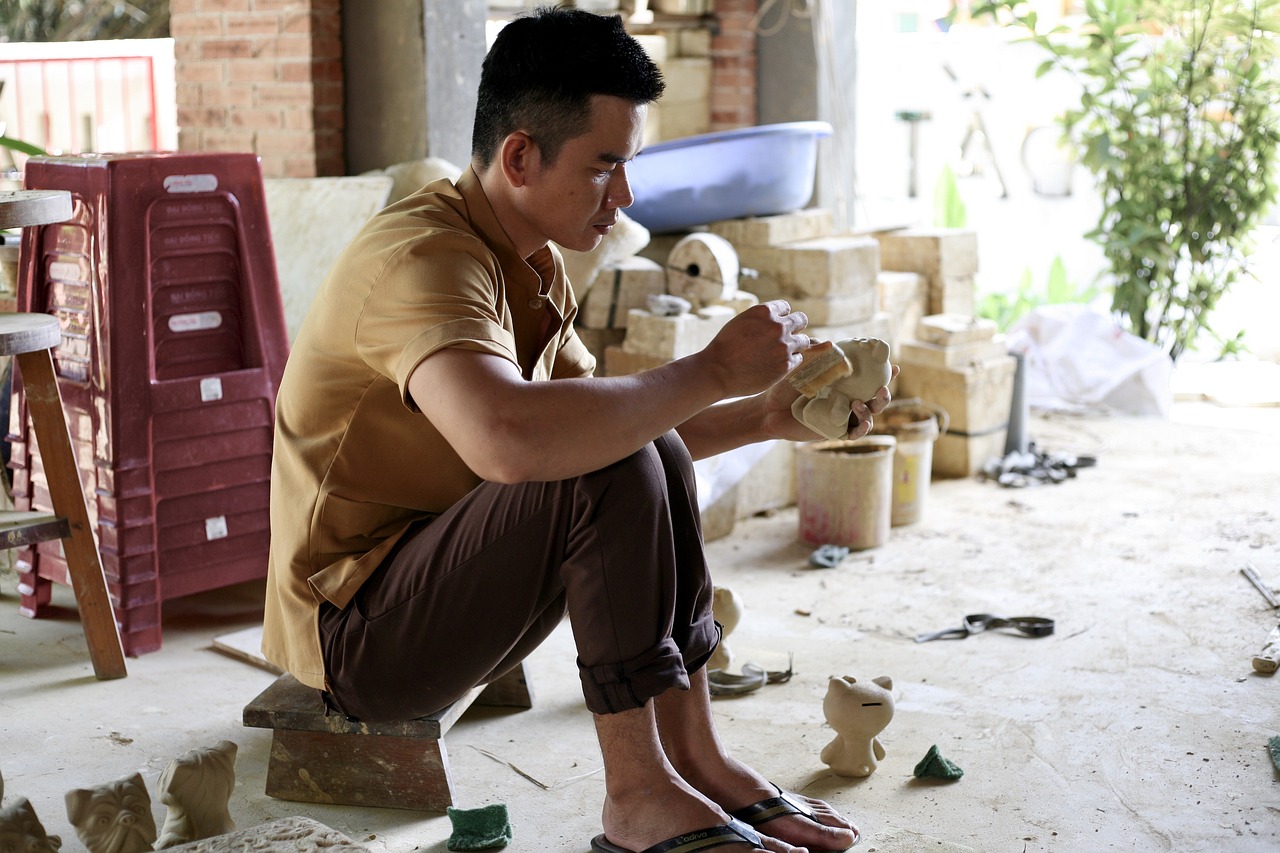
Encouraging Mentorship
Mentorship is like a bridge connecting the past with the future, especially in the world of traditional pottery. It’s not just about teaching techniques; it’s about sharing stories, passion, and a way of life. When experienced artisans take novices under their wings, they don’t just pass on skills; they ignite a spark of curiosity and creativity. Imagine a seasoned potter, hands caked in clay, sharing the secrets of their craft while reminiscing about the first time they shaped a bowl. This personal touch transforms the learning experience from mere instruction to a rich, engaging journey.
Moreover, mentorship can take various forms. It can be one-on-one sessions where intricate techniques are demonstrated, or it can be structured workshops that allow multiple learners to engage with the craft simultaneously. Such setups not only enhance skill acquisition but also foster a sense of community among participants. For instance, consider a workshop where young potters gather to learn about glazing techniques. They not only learn from the mentor but also share ideas and inspire each other, creating a vibrant learning atmosphere.
In addition, mentorship programs can be tailored to include various aspects of pottery, such as:
- Technical Skills: Focus on wheel-throwing, hand-building, and glazing techniques.
- Artistic Development: Encourage creativity through design and innovative approaches.
- Business Acumen: Teach young potters how to market their work and manage a pottery business.
By fostering these programs, we can ensure that the next generation of potters not only learns the traditional methods but also feels empowered to innovate and adapt them. This blend of heritage and modernity can keep the art of pottery alive and thriving. As we encourage mentorship, we’re not just preserving a craft; we’re nurturing a community that values and celebrates its history while looking forward to a bright future.
1. Why is mentorship important in pottery?
Mentorship is crucial as it helps transfer invaluable skills and knowledge from experienced artisans to novices, ensuring that traditional techniques are preserved and evolved.
2. How can I find a mentor in pottery?
You can find a mentor by joining local pottery classes, workshops, or community art centers. Networking within pottery groups on social media platforms can also lead to mentorship opportunities.
3. What should I look for in a pottery mentor?
Look for someone who not only has technical expertise but also shares a passion for teaching and nurturing creativity. A mentor should be approachable and willing to share their experiences.
4. Can mentorship be done online?
Absolutely! Many artisans offer online workshops and tutorials, making it easier to connect with mentors regardless of geographical limitations.
5. How long does a mentorship program typically last?
The duration can vary widely depending on the program structure, but many mentorships can last from a few weeks to several months, allowing ample time for skill development and feedback.

Fading Interest Among Younger Generations
The world is evolving at a breakneck pace, and with it, the interests of younger generations are shifting. Traditional pottery, with its intricate techniques and rich history, often struggles to capture the attention of today’s youth. But why is that? One reason could be the overwhelming influence of technology and modern art forms that dominate social media and popular culture. Young people are bombarded with flashy digital art, instant gratification through apps, and the allure of contemporary design. This creates a challenge for traditional crafts, which require patience and a deep appreciation for the process.
Moreover, many younger individuals may not see the relevance of ancient pottery techniques in their daily lives. They might think, "Why should I spend hours shaping clay when I can just order a stylish mug online?" This mindset highlights a disconnect between the beauty of handmade art and the convenience of mass-produced items. It's essential to bridge this gap by showcasing the unique stories and cultural significance behind each pottery piece. When young people understand that each item carries a piece of history and craftsmanship, their interest may be piqued.
To effectively engage younger generations, we need to present pottery in a way that resonates with their values and interests. For example, workshops that incorporate modern themes or social media challenges can attract attention. Imagine a pottery competition where participants create pieces inspired by their favorite pop culture references or current environmental issues. Such initiatives can make pottery feel relevant and exciting. Additionally, collaborating with popular influencers in the art world can help shine a spotlight on traditional techniques, making them more appealing to a broader audience.
Ultimately, fostering a genuine interest in traditional pottery among younger generations requires a multifaceted approach. Here are some strategies that could help:
- Interactive Workshops: Hosting events where young people can get hands-on experience with pottery can spark interest.
- Social Media Campaigns: Using platforms like Instagram and TikTok to showcase the beauty of pottery can attract a younger audience.
- Collaborations with Modern Artists: Partnering with contemporary artists to create fusion pieces can draw in those who appreciate modern aesthetics.
By implementing these strategies, we can create a vibrant community that values the art of pottery and its historical significance. Reviving interest in traditional techniques is not just about preserving the past; it’s about ensuring that these beautiful crafts continue to inspire future generations. As we navigate this challenge, let’s remember that every potter starts with a single lump of clay—just like every generation has the potential to mold its own unique legacy.
Q1: Why is traditional pottery important?
A1: Traditional pottery is a vital part of cultural heritage, representing the craftsmanship and stories of communities throughout history.
Q2: How can I get involved in pottery?
A2: You can start by attending local workshops, joining pottery classes, or exploring online tutorials to learn basic techniques.
Q3: What are some modern techniques used in pottery?
A3: Modern techniques include 3D printing, digital design software, and innovative glazing methods that enhance traditional practices.
Q4: How can we encourage young people to appreciate pottery?
A4: By making pottery accessible through interactive workshops, social media engagement, and collaborations with contemporary artists, we can spark interest among younger generations.
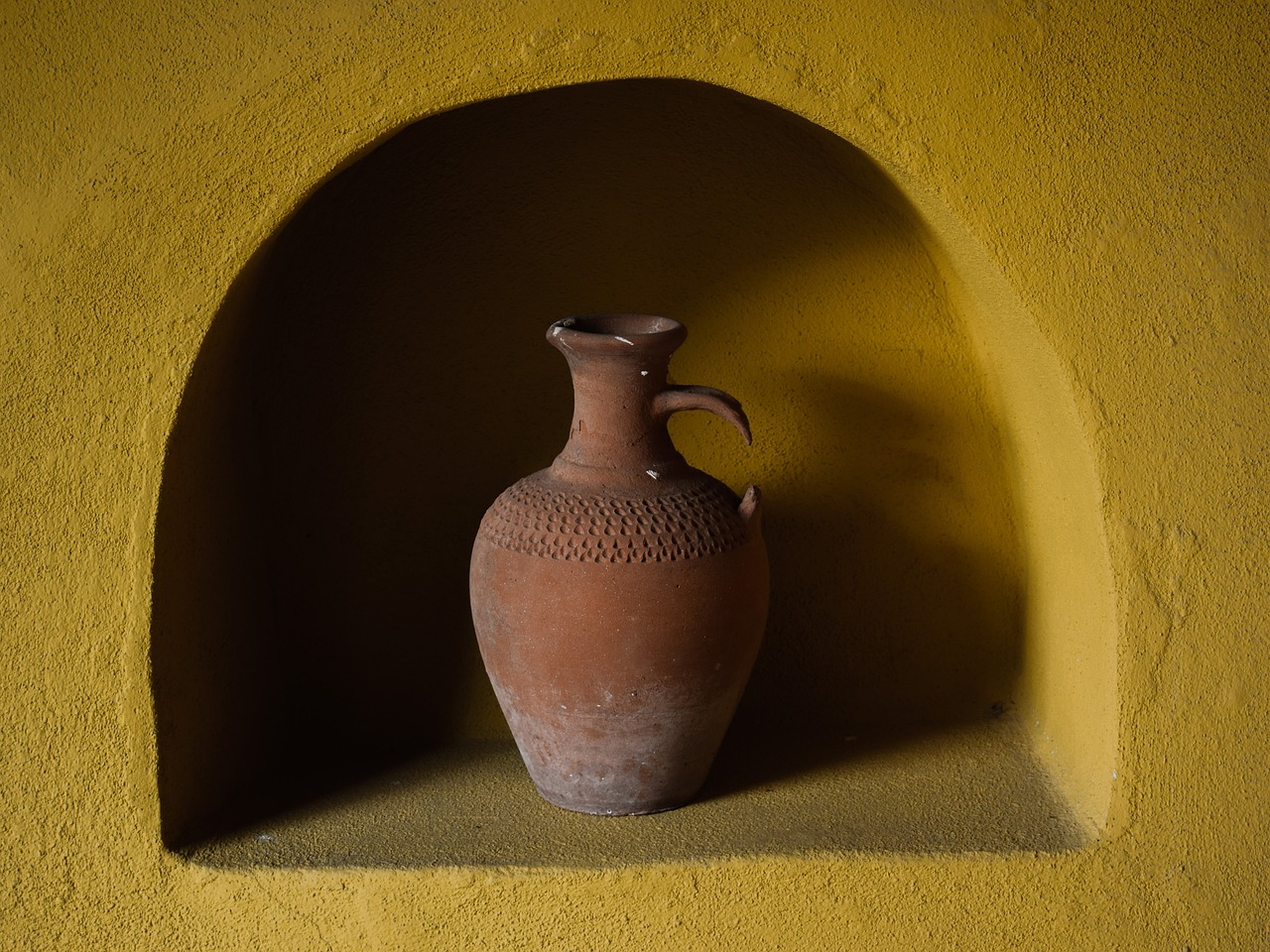
Innovative Approaches to Revival
This article explores the significance of preserving ancient pottery techniques, the challenges faced, and the innovative approaches being adopted to revive these traditional crafts for future generations.
Traditional pottery represents cultural heritage and identity. Understanding its significance helps us appreciate the craftsmanship and the stories behind each piece, fostering a deeper connection to our history and communities.
Reviving lost pottery techniques faces numerous challenges, including the scarcity of skilled artisans, lack of resources, and the fading interest among younger generations. Addressing these issues is crucial for the preservation of this art form.
The decline in skilled artisans poses a significant barrier to reviving lost pottery techniques. Training programs and workshops are essential to pass down knowledge and skills to a new generation of potters.
Creating training programs can help nurture talent and interest in traditional pottery techniques. These initiatives can include hands-on workshops, mentorship opportunities, and collaborations with experienced artisans.
Mentorship plays a vital role in preserving pottery techniques. Pairing experienced artisans with novices fosters knowledge transfer and inspires young potters to embrace traditional methods.
Capturing the interest of younger generations is crucial for the revival of pottery techniques. Engaging them through modern interpretations and innovative designs can help bridge the gap between tradition and contemporary art.
Innovative approaches, such as integrating technology and contemporary design, can breathe new life into traditional pottery techniques. This fusion can attract a wider audience and ensure the longevity of these crafts. For instance, the use of 3D printing technology allows artisans to experiment with new shapes and forms that were previously difficult to achieve by hand. Imagine a potter being able to create intricate designs with the precision of a machine while still maintaining the warmth and character of handmade pottery. It's like having the best of both worlds!
Moreover, the introduction of digital design tools has enabled potters to visualize their creations before they even touch the clay. This not only saves time but also encourages creativity, allowing potters to push the boundaries of traditional techniques. With technology, artisans can easily share their work online, reaching a global audience and attracting interest from collectors and enthusiasts alike.
Another exciting avenue is the modern interpretation of traditional pottery. Artists are blending age-old techniques with contemporary aesthetics, resulting in unique pieces that resonate with today's consumers. For example, a traditional Japanese tea bowl might be reimagined with bold colors and abstract patterns, appealing to a younger audience while still honoring its roots. This approach not only keeps the craft alive but also makes it relevant in a fast-paced, ever-changing world.
To further illustrate these innovative approaches, consider the following table:
| Innovative Approach | Description | Benefits |
|---|---|---|
| 3D Printing | Using technology to create intricate designs. | Enhances precision and allows for complex forms. |
| Digital Design Tools | Visualizing pottery creations before making them. | Encourages creativity and saves time. |
| Modern Interpretations | Blending traditional techniques with contemporary styles. | Makes pottery relevant to younger audiences. |
By embracing these innovative approaches, the world of pottery can evolve while still honoring its rich heritage. It's not just about preserving the past; it's about creating a vibrant future where traditional crafts can thrive alongside modern artistry.
- What are traditional pottery techniques? Traditional pottery techniques refer to the methods and styles used by artisans throughout history to create functional and decorative ceramic items.
- Why is it important to revive lost pottery techniques? Reviving these techniques helps preserve cultural heritage, fosters community identity, and keeps traditional craftsmanship alive for future generations.
- How can technology help in pottery? Technology can enhance traditional practices by allowing for precise designs, improving efficiency, and expanding the creative possibilities for potters.
- What role do younger generations play in pottery revival? Engaging younger generations is crucial as they bring fresh ideas and perspectives, ensuring that traditional crafts remain relevant and continue to evolve.

Using Technology in Pottery
The world of pottery is undergoing a fascinating transformation, thanks to the integration of technology. Imagine a potter’s wheel spinning not just with the force of a skilled artisan but also enhanced by the precision of 3D printing and digital design. This fusion of ancient craft and modern technology is not merely a trend; it’s a revolutionary approach that breathes new life into traditional pottery techniques. By leveraging technology, artisans can explore new creative avenues while remaining rooted in the rich history of their craft.
For instance, 3D printing allows potters to experiment with complex shapes and intricate designs that would be nearly impossible to achieve by hand. This technology opens up a realm of possibilities, enabling artists to create pieces that are both visually stunning and structurally sound. Furthermore, digital design software permits potters to visualize their creations before they even touch the clay, allowing for adjustments and refinements that enhance the final product. This not only saves time but also minimizes material waste, making the process more sustainable.
Moreover, technology facilitates the preservation of traditional techniques. By documenting these methods through videos and online tutorials, artisans can share their knowledge with a global audience. This accessibility ensures that even those who may not have the opportunity to attend workshops in person can still learn and appreciate the nuances of traditional pottery. The internet has become a powerful tool for connection, allowing artisans to form communities where they can exchange ideas, collaborate, and inspire one another.
However, it’s essential to strike a balance between innovation and tradition. While technology offers exciting new tools, the essence of pottery lies in the hands of the potter and the stories they tell through their work. Therefore, the challenge is to embrace these advancements while honoring the craftsmanship that has been passed down through generations. This harmonious blend can create a new wave of pottery that respects its roots while appealing to contemporary tastes.
In conclusion, the use of technology in pottery is not just about modernizing an ancient craft; it’s about expanding the horizons of what pottery can be. As artisans continue to explore this intersection of tradition and innovation, we can expect to see a resurgence of interest in pottery that captivates both seasoned collectors and a new generation of enthusiasts.
- What is the role of technology in modern pottery? Technology enhances traditional pottery practices by allowing for precise designs, reducing waste, and enabling broader access to learning resources.
- Can traditional pottery techniques coexist with modern technology? Absolutely! The integration of modern tools can complement traditional methods, creating a richer and more diverse pottery landscape.
- How can I learn about pottery techniques? Many resources are available online, including tutorials, workshops, and community forums where experienced potters share their knowledge.
- Is 3D printing replacing traditional pottery? No, it’s not a replacement but rather an enhancement that offers new possibilities while preserving the essence of traditional craftsmanship.

Modern Interpretations of Tradition
In the ever-evolving world of art, the fusion of tradition and modernity creates a vibrant tapestry that resonates with both the past and the present. When it comes to pottery, artists today are not just replicating ancient techniques; they are reimagining them in ways that speak to contemporary audiences. This exciting blend of old and new allows for a dynamic dialogue between history and innovation, inviting us to appreciate the beauty of heritage while embracing the possibilities of modern design.
One of the most compelling aspects of modern interpretations of traditional pottery is the way artists are using color, form, and texture to create pieces that are both functional and aesthetically pleasing. For instance, potters are experimenting with unconventional glazes that reflect current color trends, making their works not only traditional in technique but also relevant in today's design landscape. Imagine a classic vase, once adorned with earthy tones, now transformed into a vibrant statement piece that pops with electric blues and fiery reds!
Moreover, the incorporation of mixed media is another exciting trend. Artists are combining pottery with other materials such as metal, wood, or glass to create unique works that challenge our perceptions of what pottery can be. This cross-disciplinary approach not only broadens the artistic possibilities but also appeals to a wider audience, including those who may not traditionally appreciate pottery as an art form. For example, a ceramic bowl might feature a wooden base or metallic accents, making it a stunning centerpiece that sparks conversation.
Additionally, the rise of social media platforms has significantly influenced how traditional pottery is perceived and marketed. Artists showcase their work online, often blending storytelling with visuals to engage potential buyers. This digital presence allows for a global audience, where ancient techniques can be appreciated by people from diverse backgrounds. As a result, traditional pottery is not confined to local markets; it has the potential to reach an international stage, creating a global appreciation for these ancient crafts.
To further understand how modern interpretations are taking shape, let’s look at a few key examples:
| Artist | Technique | Modern Twist |
|---|---|---|
| Jane Doe | Wheel-throwing | Use of neon glazes |
| John Smith | Hand-building | Incorporation of metal elements |
| Emily Clark | Slip-casting | Interactive installations |
This table illustrates just a few ways in which artists are not only preserving traditional techniques but also evolving them to fit the modern aesthetic. Each artist brings their unique perspective, resulting in a rich variety of works that continue to tell the stories of their cultural heritage while inviting new narratives.
Ultimately, the revival of traditional pottery through modern interpretations is a celebration of creativity. It acknowledges the skills of past artisans while paving the way for future generations to explore and innovate. By embracing both tradition and contemporary aesthetics, we can ensure that these ancient crafts remain vibrant and relevant in our fast-paced world.
- What are modern interpretations of traditional pottery? Modern interpretations involve blending ancient pottery techniques with contemporary design elements, materials, and aesthetics to create unique art pieces that resonate with today's audience.
- How can technology influence pottery? Technology, such as 3D printing and digital design software, can enhance traditional pottery practices, allowing artists to experiment with new forms and techniques while respecting the essence of age-old methods.
- Why is it important to preserve traditional pottery techniques? Preserving these techniques is crucial for maintaining cultural heritage and identity, as they tell the stories of communities and their craftsmanship over generations.
Frequently Asked Questions
- Why is preserving traditional pottery techniques important?
Preserving traditional pottery techniques is crucial because they represent our cultural heritage and identity. Each piece of pottery tells a story, connecting us to our history and the communities we belong to. By understanding and valuing these techniques, we foster a deeper appreciation for the craftsmanship and the artisans who dedicate their lives to this art form.
- What are the main challenges in reviving lost pottery techniques?
The main challenges include the scarcity of skilled artisans, a lack of resources, and dwindling interest among younger generations. With fewer artisans to pass down their knowledge and skills, it's essential to create training programs and mentorship opportunities to nurture new talent and keep these traditions alive.
- How can training programs help in preserving pottery techniques?
Training programs can play a pivotal role by providing hands-on workshops and mentorship opportunities, allowing novices to learn directly from experienced artisans. This practical approach not only helps in skill development but also ignites passion and interest in traditional pottery among younger generations.
- What role does mentorship play in reviving pottery techniques?
Mentorship is vital as it facilitates knowledge transfer between seasoned artisans and newcomers. By pairing experienced potters with those just starting, we create an environment where traditional methods are celebrated and passed on, inspiring the next generation to embrace and innovate within this craft.
- How can we engage younger generations in traditional pottery?
Engaging younger generations can be achieved by introducing modern interpretations of traditional pottery. By blending contemporary designs with age-old techniques, artists can create unique pieces that resonate with today’s consumers, making pottery more appealing and relevant to the younger audience.
- In what ways can technology enhance traditional pottery practices?
Technology can enhance traditional pottery practices through tools like 3D printing and digital design. These innovations provide new possibilities for creativity while still respecting the core essence of traditional methods, allowing artisans to explore and expand their craft in exciting ways.
- What are some examples of modern interpretations of traditional pottery?
Modern interpretations can include artists who mix traditional glazing techniques with contemporary forms and colors. This fusion creates stunning pieces that honor heritage while appealing to modern aesthetics, bridging the gap between the past and the present.


















